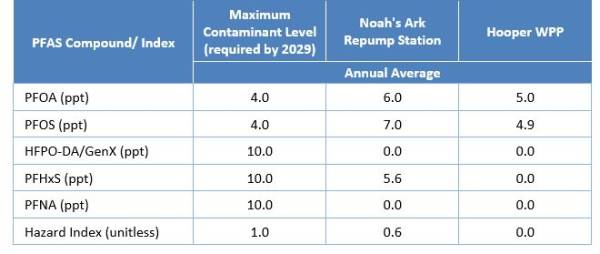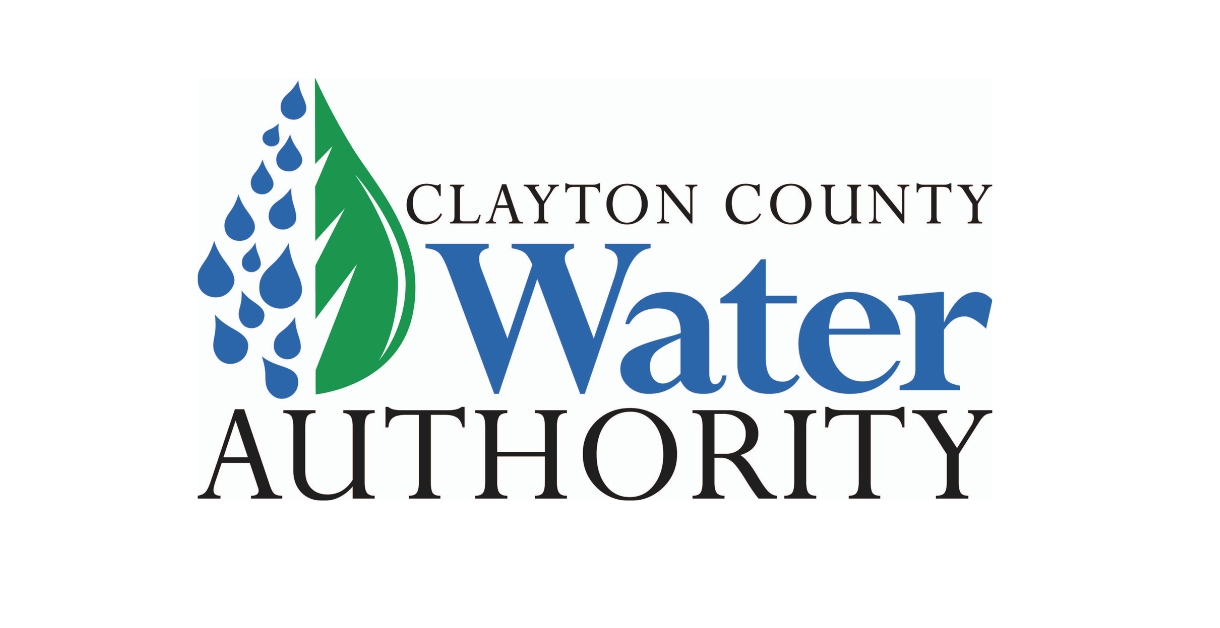CCWA Continues Working on Behalf of Our Community Following New PFAS National Primary Drinking Water Regulation
April 10, 2024 – (Morrow, GA) – Clayton County Water Authority (CCWA) continues working on behalf of our community to remove man-made compounds called per- and polyfluoroalkyl substances, PFAS for short, from our drinking water. The compounds are found in the air, drinking water sources, and countless consumer products. The Environmental Protection Agency (EPA) estimates that 80% of a typical person’s PFAS exposure comes from consumer products such as cookware, cosmetics, food wrappings, stain and water-resistant clothing, and carpet and furniture treatments. They are also in Band-Aids, deodorants, contact lenses, dental floss, toilet paper, and feminine products.
The remaining 20% of a person’s exposure to PFAS comes from drinking water. The Safe Drinking Water Act (SDWA) enables the EPA to set legal limits on the levels of specific contaminants in drinking water. Earlier today, EPA announced its Final PFAS National Primary Drinking Water Regulation that sets limits for six PFAS in drinking water. Click here to see EPA’s announcement.
“We want you to know that Clayton County Water Authority does not produce or use a single drop of PFAS in our treatment processes. It is present as the result of industrial release and discharges from other sources. However, we are tasked with the responsibility of treating and removing them, at significant cost to the Authority,” says CCWA CEO H. Bernard Franks. “We are currently meeting all regulatory requirements for safe drinking water and are working to add advanced treatment technology to our drinking water plants so that these compounds are removed. We fully expect to meet the new requirements within the five-year framework.”
CCWA continues to be proactive, working to eliminate these man-made compounds. Our progress to date includes:
- September 2023 – CCWA was awarded a $16 million Drinking Water State Revolving Fund (DWSRF) loan by the Georgia Environmental Finance Authority (GEFA) to upgrade two of its water treatment plants to remove PFAS. The 20-year GEFA loan has an interest rate of 1.63%. CCWA is eligible for this reduced interest rate because it is a WaterFirst Community. These funds will be used to fund the design phase for water treatment improvements. CCWA has also received a $14 million federal grant from GEFA’s Emerging Contaminants Communities Drinking Water Grant Program.
- September 2023 – CCWA began the litigation process of joining with other public water systems from across the United States in seeking cost recovery from manufacturers of PFAS which will serve to offset some of the costs associated with CCWA’s implementation of advanced treatment technology for the removal of PFAS from drinking water.
- February 2024 – CCWA issued a Request for Proposals (RFP) to select a contractor to design and build advanced water treatment facilities (such as reverse osmosis, granular activated carbon, etc.). This project will ensure all drinking water is in compliance with the PFAS National Primary Drinking Water Regulation.
- July 2024 – CCWA will recommend a contractor for completion of the project, in order to meet the regulatory deadline of 2029.
EPA has established limits, called maximum contaminant levels (MCLs), that water utilities are required to meet by 2029. These MCLs are shown in the table below and range from 4 parts per trillion (ppt) to 10 ppt, depending on the PFAS compound. For reference, one part per trillion in water is equivalent to one drop of water in 20 Olympic-sized pools, which average 660,000 gallons. The following summarizes the results CCWA would be reporting to GA EPD based on quarterly samples collected in 2023:

- The annual average PFOA and PFOS concentrations at both of CCWA’s entry points to the distribution system (i.e., Noah’s Ark Repump Station and Hooper Water Production Plant (WPP)) exceed the 4 ppt MCL that we are required to meet by 2029.
- The annual average HFPO-DA (GenX), PFHxS, and PFNA do not exceed the 10 ppt MCL.
- The Hazard Index, which accounts for the concentrations of HFPO-DA (GenX), PFHxS, PFNA and PFBS, compared to each compound’s health-based limit, does not currently exceed the MCL of 1 at either entry point to the distribution system.
Franks adds, “My family and I are lifelong residents of Clayton County. We continue to drink and enjoy our tap water. I am proud to be part of the Clayton County Water Authority team who takes great pride in caring for one of the world’s greatest and life sustaining resources – WATER. Our community’s public health continues to be our number one priority.”


